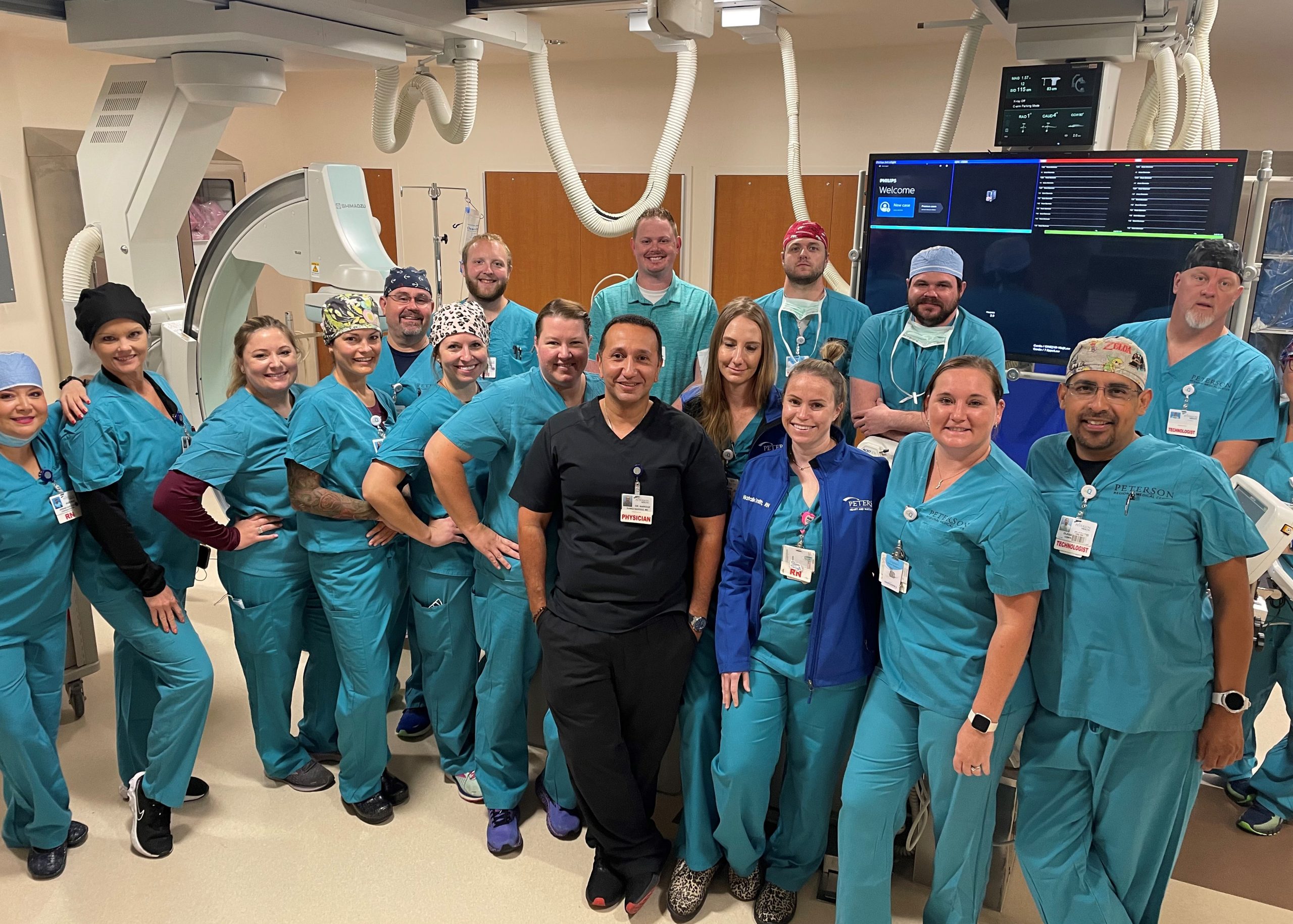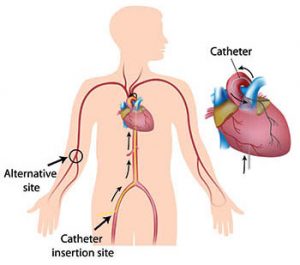
What state is the patient in during this phase?
Acute. The intervention phase occurs when the patient needs to have a vascular stenosis, or vessel blockage, identified and opened up in order to normalize blood flow and develop a treatment plan.
How quickly does intervention need to happen?
Immediately. The sooner we are able to locate the issue, the sooner we can determine the best course of action.
What is the typical time period for this phase?
Most patients are in and out of the clinic within the same day. If the patient is admitted to the hospital, they will be monitored for 2-3 days before discharge.
Where does intervention take place at Peterson?
The Catheterization Lab, located within the Heart and Vascular Clinic at Peterson Regional Medical Center.
Which team is working with the patient during this phase?
The Cardiac Catheterization / Interventional Radiology (CCIR) Team, comprised of exceptional Physicians, Nurses, and Technologists.
Which procedures/services are categorized as intervention?
There are quite a few procedures that take place during the intervention phase, including Cardiac Catheterizations, Pacemakers, Fistuolograms, and Vascular Intervention.
Cardiac Catheterization is a minimally invasive procedure used to locate narrow or blocked arteries and evaluate health of the chambers, valves, and arteries of the heart.

A brief overview of the procedure:
1. A hollow needle is inserted into an artery (left heart cath) or a vein (right heart cath) or both (full heart cath) near the groin or the wrist.
2. A flexible wire is threaded through the needle into the vessel.
3. The catheter is then put over the wire in the blood vessel and is moved slowly toward the heart while the Cardiologist tracks the device’s movement through the Flouroscope, a 360º x-ray machine that rotates around the patient during the procedure.
4. When the catheter is in position, contrast is pumped through the opening into the blood vessel. The contrast moves through the vessels and heart so the doctor can see any disturbances in the flow.

